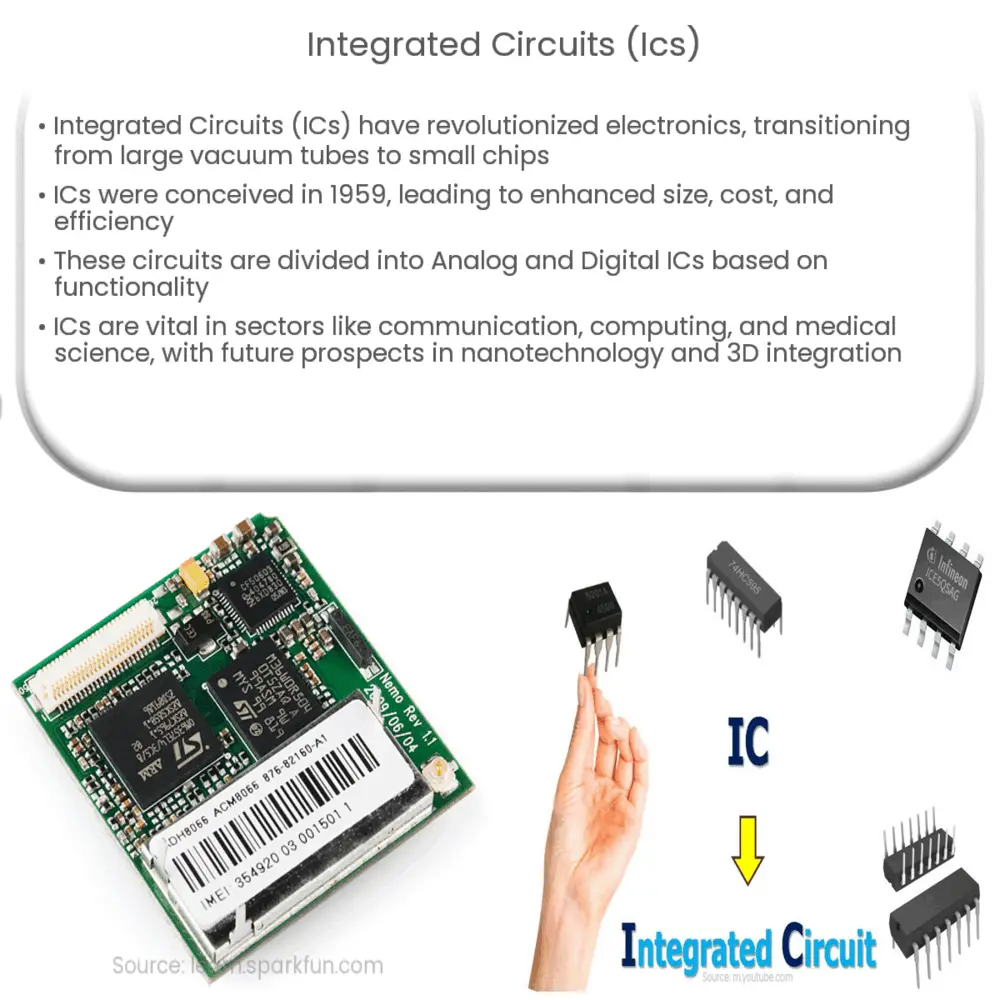Explore the evolution of Integrated Circuits (ICs), their types, fabrication process, applications, future trends, and their pivotal role in modern technology.

Introduction to Integrated Circuits (ICs)
Integrated Circuits (ICs) have revolutionized the world of electronics. The journey from colossal vacuum tubes to miniaturized ICs represents an evolution in electronic technology that has enabled advancements in numerous sectors including communication, medical science, and information technology.
The Genesis of ICs
The concept of an Integrated Circuit, also referred to as a microchip or chip, was first conceived and patented in 1959 by Robert Noyce of Fairchild Semiconductor and Jack Kilby of Texas Instruments. The invention paved the way for a new era in the electronics industry by overcoming the limitations of size, cost, and efficiency associated with the earlier discrete component-based circuits.
- Size and Scalability: ICs dramatically miniaturized electronic components, thereby offering a scalable solution for complex electronic systems.
- Cost: The process of making ICs allows for mass production, leading to a drastic reduction in costs compared to discrete components.
- Efficiency: Due to the reduced interconnection between components, ICs have low power consumption and high reliability.
Components and Types of ICs
An Integrated Circuit comprises various electronic components such as resistors, transistors, and capacitors embedded into a semiconductor material. These components are interconnected to execute a specific function. Depending on the complexity and application, ICs can be categorized into two main types: Analog ICs and Digital ICs.
- Analog ICs: These circuits deal with continuous signals and perform functions such as amplification, demodulation, and active filtering. Examples include operational amplifiers and power management ICs.
- Digital ICs: Digital ICs handle discrete signals (0 and 1). They are predominantly used in digital computing and data processing systems. Examples include microprocessors and logic ICs.
In the real world, the combination of these two types creates a Mixed Signal IC, found in applications like mobile communication where an analog signal is converted to digital for processing and vice versa.
The IC Fabrication Process
The process of creating ICs is called fabrication. It is a complex sequence of photolithographic and chemical processing steps during which electronic circuits are gradually created on a wafer made of pure semiconducting material, typically silicon.
The invention and development of Integrated Circuits laid the groundwork for subsequent technological advancements. This trend continues as modern innovations explore further miniaturization and increased functionality, evident in the journey from SSI (Small Scale Integration) to VLSI (Very Large Scale Integration), packing millions of transistors into a single chip.
Applications of Integrated Circuits
Integrated Circuits are indispensable in the modern world. Their applications span across various sectors, owing to their compactness, reliability, and performance.
- Communication: ICs are used in all communication devices like mobile phones, televisions, and radios. They are used in signal processing, modulating, and demodulating signals.
- Computing: In computers, ICs form the core of processors and memory storage devices.
- Automobiles: Modern vehicles employ numerous ICs for engine control, safety features, and entertainment systems.
- Medical Science: ICs are used in medical instruments for diagnosis, monitoring, and treatment.
Future of ICs
The future of Integrated Circuits lies in the relentless pursuit of scaling down, enabling more power, greater speed, and increased functionality within the same or reduced footprint. An emerging trend in IC technology is the use of nanotechnology and 3D ICs which allow the packing of more components into smaller spaces. This leap in technology promises to continue driving the advancement of various sectors such as AI, IoT, and quantum computing.
Challenges
While IC technology continues to advance, it faces several challenges. As components shrink, they encounter physical limitations and increased susceptibility to interference. Moreover, heat dissipation becomes a significant concern with high-density ICs. Future innovations in IC technology need to address these challenges while continuing to push the boundaries of miniaturization and functionality.
Conclusion
In conclusion, Integrated Circuits have profoundly influenced our modern world. They are the cornerstone of electronic devices, enabling advancements in communication, computing, healthcare, and countless other fields. The continual evolution of IC technology, driven by a quest for greater miniaturization and efficiency, is crucial for future technological innovations. As we look forward to 3D ICs, nanotechnology, and beyond, it’s clear that the impact of this game-changing invention will continue to resonate for decades to come.

